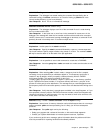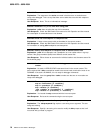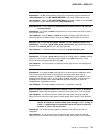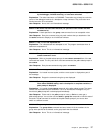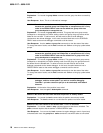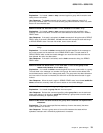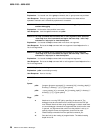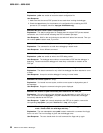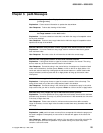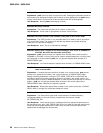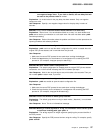
0029-9039 0029-9040
-F This flag can be used to turn off lazy reading mode. Turning lazy
reading mode off forces the remote dbx sessions to read all symbol
table information at startup time. By default, lazy reading mode is on.
Lazy reading mode is useful when debugging large executable files, or
when paging space is low. With lazy reading mode on, only the
required symbol table information is read upon initialization of the
remote dbx sessions. Because all symbol table information is not read
at dbx startup time when in lazy reading mode, local variable and
related type information will not be initially available for functions
defined in other files. The effect of this can be seen with the "whereis"
command, where instances of the specified local variable may not be
found until the other files containing these instances are somehow
referenced.
-h Writes the pdbx usage to STDERR then exits. This includes pdbx
command line syntax and a description of pdbx options.
-I Specifies a directory to be searched for an executable's source files.
This flag must be specified multiple times to set multiple paths. (Once
pdbx is running, this list can be overridden on a group or single node
basis with the 'use' command.)
-x Prevents the dbx command from stripping _ (trailing underscore)
characters from symbols originating in FORTRAN source code. This
flag enables dbx to distinguish between symbols which are identical
except for an underscore character, such as xxx and xxx_.
-tmpdir This POE_option flag is normally associated with Visualization Tool
trace collection. It specifies the directory to which output trace files are
written. For pdbx, it specifies the directory to which the individual
startup files (.pdbxinit.process_id.task_id) are written for each dbx
task. This is frequently local, and may be a shared directory. If not set,
and if its associated environment variable MP_TMPDIR is not set, the
default location is /tmp.
Environment Variables: Because the pdbx command runs in the Parallel Operating
Environment, it interacts with the same environment variables associated with the
poe command. See the POE manual page for a description of these environment
variables. As indicated by the syntax statements, you are also able to specify poe
command line options when invoking pdbx. Using these options will override the
setting of the corresponding environment variable, as is the case when invoking a
parallel program with the poe command.
0029-9039 Cannot read attach configuration file.
Explanation: pdbx could not read the attach configuration file, which is created when the
original POE job was started, and is removed when the job ends.
User Response:
1. Make sure the correct POE process id was used when invoking the debugger.
2. Check the /tmp directory for the existence of a configuration file containing the POE
process id. (For example, check /tmp/.ppe.<
poe pid>
.attach.cfg).
0029-9040 Cannot open attach configuration file.
Explanation: pdbx was unable to open the attach configuration file.
User Response:
1. Make sure that the correct POE process id was used when invoking the debugger.
2. Check the /tmp directory for the existence of a configuration file containing the POE
process id. (For example, check for /tmp/.ppe.34192.attach.cfg).
Chapter 2. pdbx Messages 21



